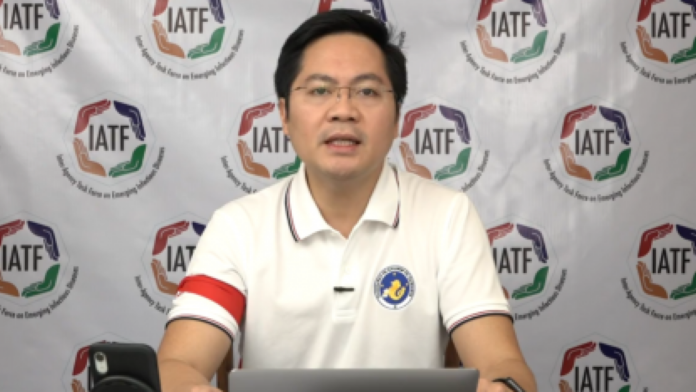The Inter-Agency Task Force for the Management of Emerging Infectious Diseases (IATF-EID) has approved new testing and quarantine protocols for arriving international passengers from countries, territories, and jurisdictions in the “green” and “yellow” list effective December 3.
The green list is composed of countries, territories, and jurisdictions with a low risk of COVID-19 infection while the yellow list is composed of destinations with a moderate risk of COVID-19 infection.
“For fully vaccinated individuals, they shall be required to have a negative RT-PCR test conducted within 72 hours prior to departure from the country of origin,” Cabinet Secretary and Acting Presidential Spokesperson Karlo Nograles said in a press statement.
“Upon arrival in the Philippines, they shall undergo facility-based quarantine with an RT-PCR test taken on the 5th day, with the date of arrival being the first day,” he added.
Regardless of a negative result, they shall be required to undergo home quarantine up to the 14th day from the date of arrival.
“Individuals who are unvaccinated, partially vaccinated, or whose vaccination status cannot be independently validated shall be required a negative RT-PCR test conducted within 72 hours prior to departure from the country of origin,” Nograles said.
Upon arrival in the Philippines, they shall undergo facility-based quarantine with an RT-PCR test done on the 7th day, with the date of arrival being the first day.
Regardless of a negative result, they shall be required to undergo home quarantine up to the 14th day from the date of arrival.
The Department of Transportation (DOTRr) must ensure that airlines board only passengers who comply with the negative RT-PCR test-before-travel requirement.
On the other hand, testing and quarantine protocols of minors shall follow the testing and quarantine protocol of the parent/guardian traveling with them, regardless of the minor’s vaccination status and country of origin.
International passengers who have already arrived and are currently undergoing quarantine shall continue with the testing and quarantine protocols in place at the time of their arrival.
Filipinos from “red” (high-risk) list countries, territories, and jurisdictions allowed entry via government-initiated or non-government repatriations, and Bayanihan Flights shall only be allowed to deplane via the Ninoy Aquino International Airport (NAIA) and/or Clark International Airport.
The DOTr, through their attached agencies, must ensure the compliance of airlines with this directive.
Upon arrival, the individual shall comply with the testing and quarantine protocols as prescribed under IATF Resolution No. 149-A (s.2021).
Updated Alert Level classification metrics
Meanwhile, the IATF also downgraded the Alert Level classification in Apayao to Alert Level 2, effective December 3 until December 15.
This, after IATF amended the metrics for determining Alert Level classifications of provinces, highly urbanized cities, and independent component cities.
The amendments include:
• Removing the One-Week Growth Rate as a metric for escalation from Alert Level 1 to Alert Level 2;
• The escalation of areas under Alert Level 1 to Alert Level 2 if either case classification or total COVID-19 bed utilization increases to moderate risk or higher;
• The escalation of areas under Alert Level 2 to Alert Level 3 if both case classification and total COVID-19 bed utilization are at moderate risk, or if case classification is at high to critical risk. (PNA)


